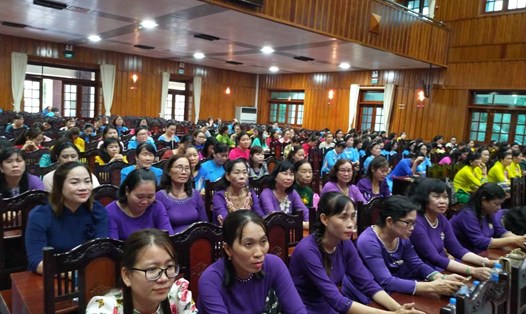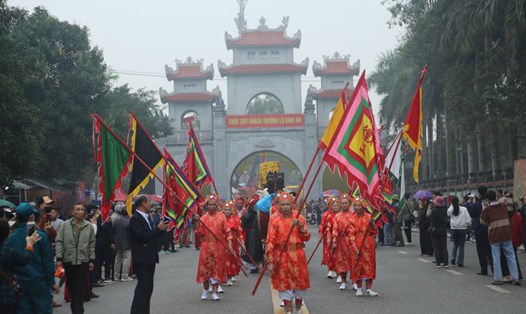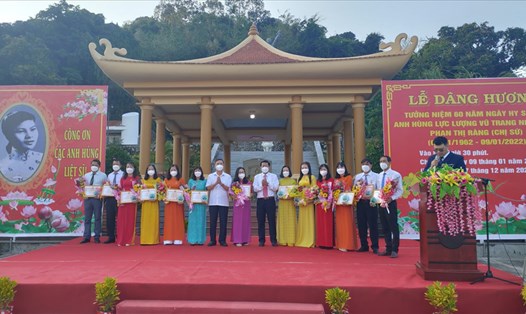Legend of two Vietnamese heroines
The Trung Sisters were twin sisters, the elder sister was named Trung Trac, the younger sister was named Trung Nhi, born and raised in a family with a tradition of patriotism. According to historical records, the two sisters were originally from Ha Loi village (Me Linh commune, Me Linh district, Hanoi); their father was a Lac Tuong official of Me Linh district, their mother was Mrs. Nguyen Thi Doan, from a young age they were taken care of by their parents and invited good teachers to teach them, when they grew up they were both talented in both literature and martial arts.
When she was in her twenties, Trung Trac married Thi Sach, the son of the Lac Tuong of Chu Dien citadel. Both Trung Trac and her husband were patriots and determined to fight against the Northern domination. The Han Dynasty ruled our country with brutal policies, and the one who implemented those policies was the Governor To Dinh, who killed Thi Sach when he and his wife were preparing for the uprising.
With patriotism and determination to fight the enemy and the revenge of her husband's murder, Trung Trac and her younger sister raised the flag of uprising with the local people to drive out the Han army, capturing 65 districts and cities on Vietnamese land. After that, the two women became kings and were honored by the people as Trung Vuong, establishing the capital in Me Linh. The uprising of the two women along with other female generals clearly demonstrated the spirit of "When the enemy comes to our house, women also fight" of Vietnamese women from the first century AD.
After more than 2 years in power, the two ladies had many good policies to make people's lives less miserable. In the year 43, the Han invaders continued to send troops to attack, the Trung sisters and the Vietnamese people fought back fiercely, later due to the strong enemy forces, the two ladies had to retreat to Cam Khe and committed suicide at Hat Giang River. After the two ladies turned into corpses at Hat River, many mysterious stories were passed down, people in many places worshiped them to remember the great merits of the two ladies.
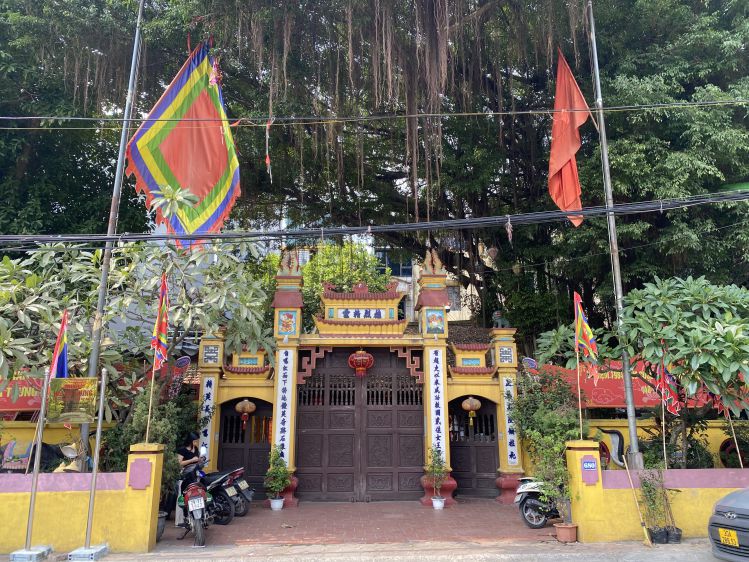
Ancient temple worshiping two female generals
Hai Ba Trung Temple is also known as Dong Nhan Temple, named after the ancient village. Dong Nhan, also known as Dong Nhan Chau, is an ancient village located on the banks of the Red River, now in Bach Dang Ward, Hai Ba Trung District, Hanoi City. Located about 1km west of Bach Dang Ward is Dong Nhan Ward, which is said to be where the ancient Dong Nhan villagers moved here to live.
The place name Dong Nhan was mentioned in the 12th century through the event of recording the construction of the temple to worship the Trung Sisters. In the book “Dai Nam Nhat Thong Chi” it is written: “According to legend, the Trung sisters died in the Nhi River, then turned into two stone statues, sitting in the middle of the water, often emitting light, very sacred. In the 3rd year of Dai Dinh (1142) of Ly Anh Tong’s reign, there was a great drought, they came to the temple to pray for help and it was answered, so they built a temple on the river bank. Later, because the river water eroded, the local people moved the temple to Huong Vien village, Tho Xuong district. There is also a temple in Nam Mau village, Chuong Duc district”.
Today, at Dong Nhan Temple on Huong Vien Street, there is still a stone stele named “Trung Vuong su tich bi ky” composed by Doctor Vu Tong Phan in the 20th year of Minh Mang (1840). On the stele, there is a passage about the history of Hai Ba Trung Temple as follows: “In Dong Nhan village, Thanh Tri district, a temple was built to worship Hai Ba on the riverbank in the past”. It can be seen that Hai Ba Trung Temple was the first place to worship the first two female generals in Vietnamese history in this area since the mid-12th century.
Today, Hai Ba Trung Temple is located on a 400m2 land with a modest scale and area, but the temple always exudes solemnity and majesty. The architectural layout of the temple consists of 2 parts, cut in half by Bach Dang Street, the front part is adjacent to the Red River, from the river to the yard are steps, up to the yard is the four-pillar gate, two large pillars are carved with phoenixes on top, two small pillars are carved with lions on top. From the four-pillar gate, there are 2 rows of houses for disarming, each row has 3 rooms facing each other.
Passing Bach Dang street is the three-entrance gate of Hai Ba Trung temple, the three-entrance gate consists of three gates, one main gate and two side gates, on the main gate are four Chinese characters "Hung liet tinh linh" (Heroic sacred soul). On the main gate and two side gates are parallel sentences to honor the great contributions of the two female heroes. Outside the temple wall is a sign "Classified historical and cultural relic, a place to worship Hai Ba Trung, located in the Red River, Dong Nhan village". The main worshiping architecture of the temple has a "T" shape, including a main hall with three compartments and a rear shrine with one compartment. The rear shrine is the place to worship Hai Ba Trung and the two left and right altars are the places to worship the female generals who fought with them.
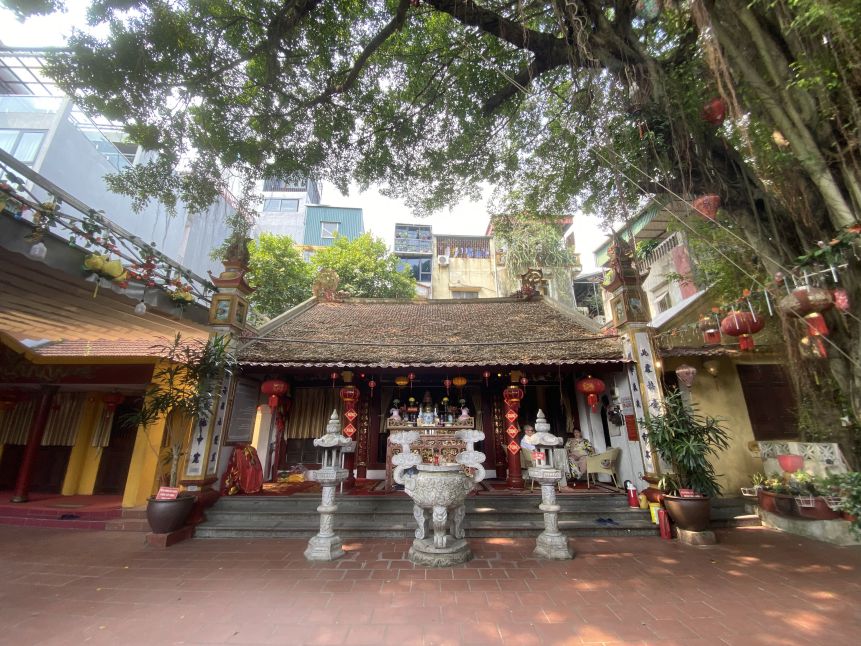
Heritage of Dong Nhan ancient land
Currently, Hai Ba Trung Temple still preserves a few artifacts of historical and cultural value such as: incense table, memorial tablet of the two ladies, dragon throne, wooden dragon palanquin decorated with unique patterns in the Nguyen Dynasty art style. There is still a bell cast in cast iron with dimensions: 77cm high, 38cm in diameter; on the body of the bell are carved decorative patterns, especially the embossed Chinese characters "Hong Khanh Tu Chung". Hai Ba Trung Temple also preserves 17 royal decrees from the Le Dynasty to the Nguyen Dynasty.
The Hai Ba Trung Temple annually holds a festival from the 5th to the 7th of the second lunar month along with the communal house, Dong Nhan Temple and Vien Minh Pagoda. When the festival takes place, people hold a ceremony to worship the Thanh Hoang at Dong Nhan communal house and hold a festival at the temple, then carry the palanquin from the temple to the Hai Ba Trung Temple. When the procession reaches the temple, local people take a dragon boat to the middle of the Red River to get water to bathe the statue and make offerings.
With the traditional values of "remembering the source of water" of the Vietnamese people and the heroic, indomitable, loyal spirit of Vietnamese women, at the same time, imbued with history, culture, architecture and art, Hai Ba Trung Temple was ranked as a historical, architectural and artistic relic by the Ministry of Culture - Information (now the Ministry of Culture, Sports and Tourism) on October 6, 1994.







